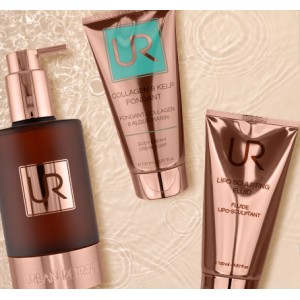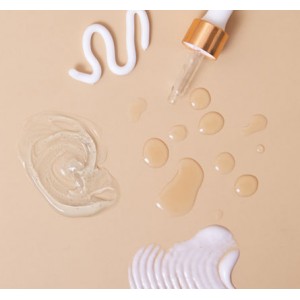Recycling
RECYCLING


We have a recycling contract to deal with everything that enters our facility, be it glass, plastic, or cardboard. We use recyclable materials for everything that leaves our facilities, including our shipping boxes and filling tissue paper.
Our skincare containers are recycled glass.
Glass can be recycled many times over without degrading, so this infinite usage means that no further raw materials need to be used to create more. If we all recycled our glass it could go on being used forever.
Our caps are made from aluminium.
Our tubes are made from aluminium laminate.
Aluminium can be recycled forever: It can be melted down and reformed without losing any quality, and the process can be repeated over and over again.

ENVIRONMENTAL BENEFITS
Glass produced from recycled glass reduces related air pollution by 20% and related water pollution by 50%.
Recycling glass reduces the space in landfills that would otherwise be taken up by used bottles and jars.
Save energy and reduce carbon emissions by using recycled glass – every 1000 tonnes of recycled glass that gets melted down saves 314 tonnes of CO2.
Recycling aluminium uses 95% less energy than producing aluminium from raw materials.
It also saves 97% of greenhouse gas emissions produced in the primary production process.
Recycling 1 tonne of aluminium saves 9 tonnes of CO2 emissions and 4 tonnes of bauxite – the raw material from which aluminium is made.

WHY WE BELIEVE RECYCLING IS IMPORTANT
Recycling: waste becomes new raw materials, which makes it possible to create a sustainable cycle and preserve our natural resources which are limited.
Global consumption of raw materials and fossil fuels has progressed in gigantic proportions. Raw materials are now coveted by all. Useful raw materials can be found in our waste, The issue of recycling has never been so important.
Energy recovery: After being sorted, and then compressed, we can create combustible solid fuel. This sector must be reserved for wood waste and its derivatives like cardboard etc, to preserve our carpentry wood resources.
Methanisation: This process consists of concentrating fermentable waste to create the natural biological process of degradation of organic matter. The methane thus recovered will be used to produce electricity while reducing the natural production of CO2 in the atmosphere.

Solid recovery fuel (CSR): product from non-hazardous and non-recyclable waste, it feeds industrial installations that are highly consuming of fossil fuels. This substitution fuel makes it possible to enhance waste which was, in the past, buried or cremated.
100% valuation objective: The frantic growth in the global need for raw materials should encourage us to consume better and recycle better. Our traditional waste treatment tools, such as landfill centres or household waste incineration centres, today seem to be overwhelmed by environmental issues.
We must all participate in this evolution which encourages us to consume better, to sort better, to better recycle and to reach our 100% valuation objective together.






